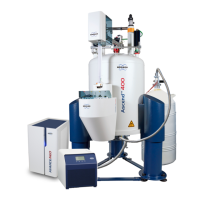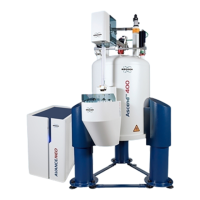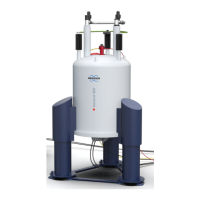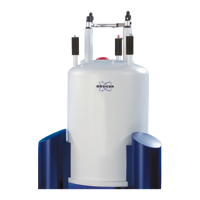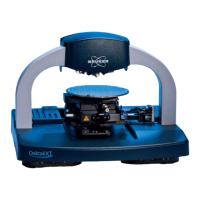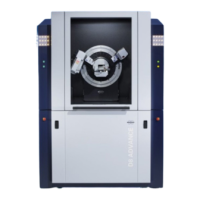Utility Requirements
H157655_1_008 63
8.3.4.2 Dryers
Refrigeration Dryers
This type of dryer removes moisture from gas by cooling to within a few degrees of the
freezing point of water. The condensed moisture is removed in a separator and drain trap
mechanism located immediately downstream of the dryer. This drain should be valve
switched automatically.
Advantages
• None of the compressed gas is wasted in regeneration which is more suitable if the
capacity of the compressor is marginal.
• Maintenance free.
• Not as susceptible to oil mist contamination as adsorption dryers, thus do not have the
same need for pre-filters.
Disadvantage
• These type of dryers are limited because of their inability to produce very low dew points.
The recommended dew point for room temperature work of 4°C is only just achievable.
Therefore if low temperature NMR is to be carried out, this type of dryer is unsuitable.
Absorbtion Dryers
The air is passed through cartridges of synthetic zeolite known as Molecular Sieves. The
sieves are hygroscopic and retain water molecules when air is passed through them. Two
sieves are normally used alternatively. A portion of the dry air output of sieve A is fed into
sieve B to regenerate it. The amount used in regeneration is typically 15% but up to 25% may
be required for very low dew points. The process is automatically reversed at regular intervals
with the output of sieve B used to regenerate sieve A.
Advantages
• Much lower dew points are achievable compared to refrigeration dryers.
• Automatic Regeneration: Normally the sieves will last for many years if they do not
become contaminated with oil, e.g. from mist in the air.
• The drying agent may be easily replaced.
Disadvantages
• Up to 25% of throughput is used to achieve the automatic regeneration.
• Requires the use of more dust filters.
• Filters at the input (oil < 0.01 mg/m
3
) are required due to the susceptibility to oil
contamination from mist in the air.
• The use of absorption dryers may lead to the generation of dust and so the dried air
output must be fed through an appropriate filter (1 micron).
• These dryers require more maintenance than refrigeration dryers.
• They can be noisy when switching between the two cartridges.
• Due to the different absorption rates of nitrogen and oxygen the N2/O2 composition may
change. To prevent this, an absorption dryer should be placed between the compressor
and buffer tank.
